KEY BISCAYNE
|
| Type of dive: |
|
Wreck |
| Snorkelling: |
|
No, too deep! |
| Scuba: |
|
Deep Diver |
| Access: |
|
Boat only (60-120 minutes) |
| Depth: |
|
26 – 42 metres (85-138’) |
| Visibility: |
|
10 – 30 metres (30-100’) |
| Water temperature: |
|
18 – 24°C (64-75°F) |
| Seasonal: |
|
No, can visit anytime |
The former jack-up drilling rig, Key Biscayne, lays upside down on a sandy bottom supporting a stunning array of fish life.
In September 1983, while undertow from Darwin to Fremantle for stacking in the Cockburn Sound to await deployment, the Key Biscayne, its tow vessels, Atlas Van Diemen and Lady Sonia, and support vessel, Argus Guard, struck rough weather.
The tow line parted in gale force winds and heavy seas, and Key Biscayne sunk 19 kilometres (12 mi) north west of Ledge Point off Lancelin.
All 52 crew were rescued uninjured by helicopter.
The drilling rig now sits on sand upside down in 42 metres (138’) of water with the top of the wreck in 26 metres (85’).
Key Biscayne had three triangular truss legs 108.8 metres (120 yds) long, four deck mounted cranes, four-level accommodation quarters for 95 crew, and a helipad.
No effort to salvage the wreck was mounted and the bottom is literally covered with junk and debris, including a container, drilling pipes and chain.
The main part of the wreck is an upside-down pyramid with the crew quarters under the triangular main hull. The jack-up arms extend out away from the main body and support a huge population of western rock lobster (crayfish).
The wreck structure also supports colourful sponges, ascidians, bright gorgonian fans; and the invertebrate life just keeps getting better as the wreck ages on the bottom.
Large schools of pelagic fish such as trevally and samson fish circle the wreckage with grey nurse sharks, while Western Australian dhufish, snapper, Port Jackson sharks and many other fish reside amongst the Key Biscayne debris.
Because the location of the Key Biscayne is quite exposed and subject to current, access to the wreck is very limited but certainly well worth the effort.
Special thanks to Luke Nelson of Image Dive.
Copyright © 2024 Steve Sinclair
Vessel details:
Type: Non-propelled jack-up drilling rig
Launched: Singapore 1972
Sank: 1983 (floundered in a storm)
Length: 61.8 metres (203’)
Beam: 51.21 metres (168’)
Displacement: 2695 tons
Speed: Not applicable (under tow)
Crew: 52
Passengers: Nil
Other great dive sites to visit while you are there:
Lancelin Reef, Ledge Point, Cervantes, Jurien Bay and Yanchep Beach.
Local dive services:
|
|
IMAGE DIVE & CHARTERS |
 |
BLAST EXPERIENCES |
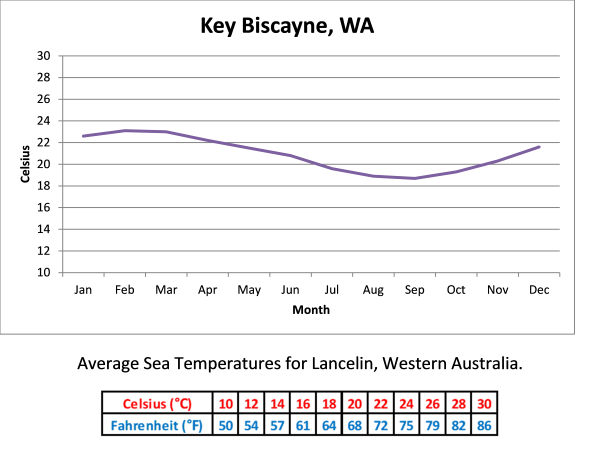
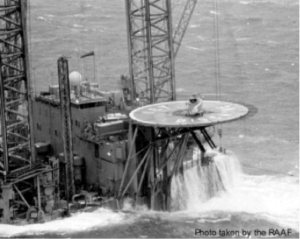
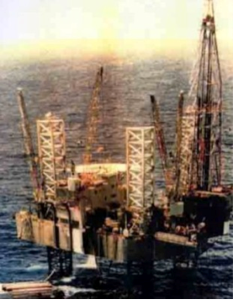

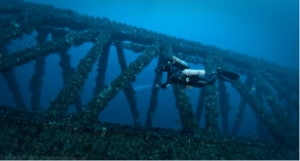

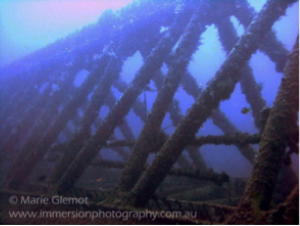

OTHER INFORMATION
LOCATION
State or Territory:
Western Australia
Nearest City:
Perth
Nearest Regional City:
Not relevant
Nearest Town:
Lancelin
HOW TO GET THERE
Air:
Nearest International Airport:
Perth
Nearest Domestic/Regional Airport:
Perth
Road:
Perth to Lancelin:
1.5 hours (130 kms/80 mi) via State Route 60
Bus:
From Perth
Train:
Not available
Ferry:
Not relevant
THINGS TO DO
Lancelin Sand Dunes
Sand Surfing
Kayaking
Wind Surfing
Kite Surfing



















